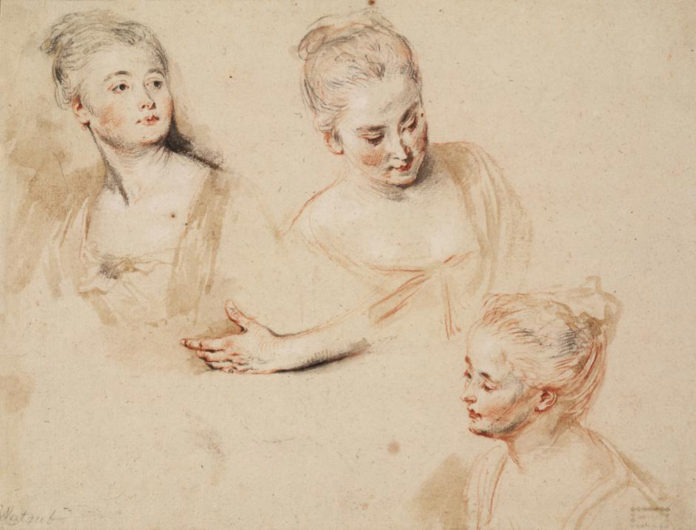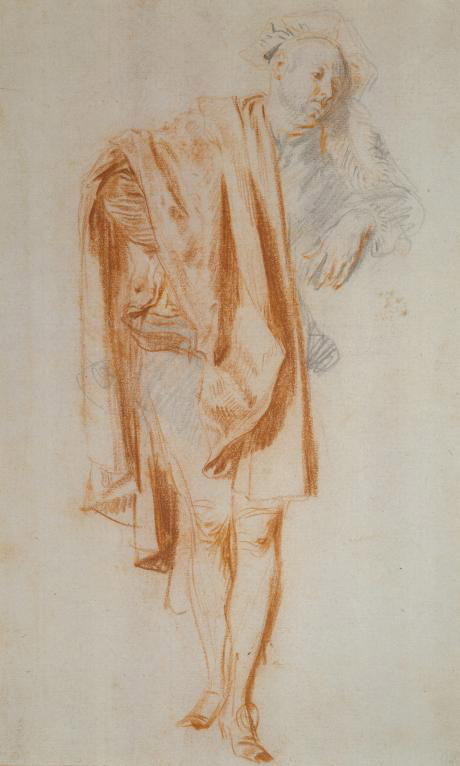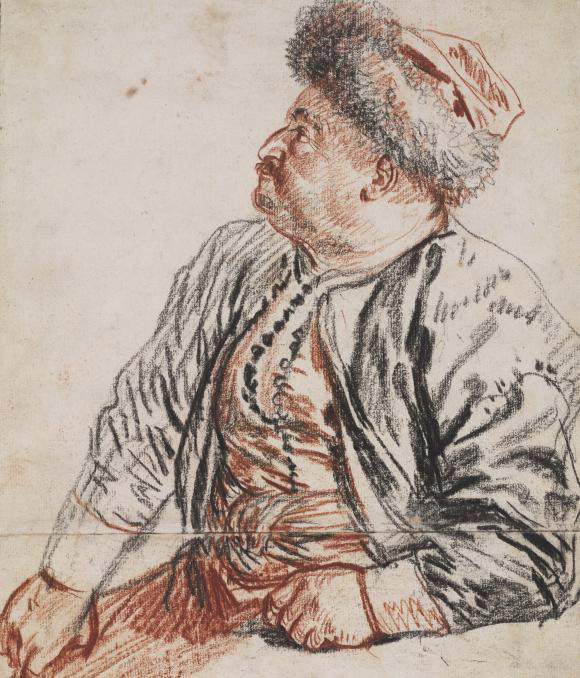
There have been many artists throughout history who have mastered dry mediums on paper, among them Peter Paul Rubens, Rembrandt, Michelangelo, and Leonardo da Vinci. However, scholars often refer to this Rococo painter as a champion, and many of his most stunning examples are now on view here.
Perhaps known best for his pastoral and whimsical paintings of amorous couples in deeply romantic settings, Antoine Watteau (1684-1721) is also championed as one of the greatest draughtsman in art history. That reputation should impress the learned connoisseur, as many of the greatest artists in history have picked up the pencil or stick of chalk to study the unassuming peasant, or a classical sculpture. Indeed, drawings by Peter Paul Rubens, Degas, Rembrandt, Michelangelo, and Da Vinci survive in great numbers.

The Städel Museum in Frankfurt, Germany, recently unveiled an extraordinary exhibition focused exclusively on the drawings of Watteau, and it’s, well, drawing worldwide attention. Via the museum website: “The show in the Exhibition Gallery of the Department of Prints and Drawings will bring together fifty drawings by Watteau, enhanced by six of his paintings and a small selection of drawings by contemporaries and successors. Organized in cooperation with Teylers Museum in Haarlem, Holland, the exhibition ‘Watteau. The Draughtsman’ will be the first monographic presentation of the artist’s work in Germany for more than thirty years. It will moreover be the first in this country devoted specifically to the phenomenon of Watteau in all his many facets as a draughtsman.

“Drawings served him as a basis for his painterly work. He drew continually and habitually, and in the most varied situations. The Städel has in its holdings altogether seven works from different phases of his career — and thus one of the most prominent Watteau collections in Germany. The precious sheets from the two institutions will form the exhibition’s core, and be supplemented by loans of high quality from collections in Germany, Holland, France and other European countries.”
To learn more, visit The Städel Museum.
This article was featured in Fine Art Today, a weekly e-newsletter from Fine Art Connoisseur magazine. To start receiving Fine Art Today for free, click here.







